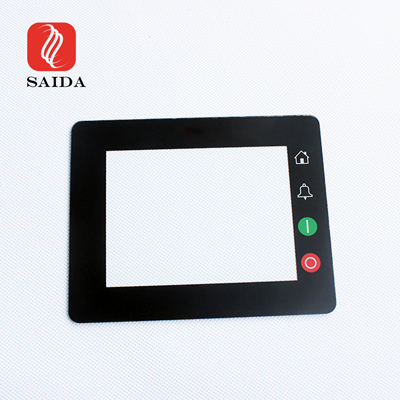With the rapid development of intelligent technology industry and the popularity of digital products in recent years, smart phones and tablet computers equipped with touch screen have become an indispensable part of our life. The cover glass of the outermost layer of the touch screen has become a high-strength “armor” to protect the touch screen.
Characteristics and application fields.
Cover lens is mainly used in the outermost layer of touch screen. The main raw material of the product is ultra-thin flat glass, which has the functions of anti impact, scratch resistance, oil stain resistance, fingerprint prevention, enhanced light transmittance and so on. At present, it is widely used in a variety of electronic consumer products with touch function and display function.
Compared with other materials, cover glass has obvious advantages in surface finish, thickness, high hardness, compression resistance, scratch resistance and other important parameters and properties, so it has gradually become the mainstream protection scheme of various touch technologies. With the increasing popularity of 5g network, in order to solve the problem that metal materials are easy to weaken 5g signal transmission, more and more mobile phones also use non-metallic materials such as glass with excellent signal transmission. The rise of large screen flat panel devices supporting 5g network in the market has promoted the rapid rise of the demand for cover glass.
Production process:
The production process of cover glass front end can be divided into overflow pull-down method and float method.
1. Overflow pull-down method: the glass liquid enters the overflow channel from the feeding part and flows downward along the surface of the long overflow tank. It converges at the bottom end of the wedge at the lower part of the overflow tank to form a glass belt, which is annealed to form flat glass. It is a hot technology in the manufacturing of ultra-thin cover glass at present, with high processing yield, good quality and good overall performance.
2. Float method: the liquid glass flows into the molten metal float tank after being discharged from the furnace. The glass in the float tank is leveled freely on the metal surface by surface tension and gravity. When it reaches the end of the tank, it is cooled to a certain temperature. After coming out of the float tank, the glass enters the annealing pit for further cooling and cutting. Float glass has good surface flatness and strong optical properties.
After production, many functional requirements of cover glass should be realized through production processes such as cutting, CNC engraving, grinding, strengthening, silk screen printing, coating and cleaning. Despite the rapid innovation of display technology, the fine process design, control level and side effect suppression effect still need to rely on long-term experience, which are the key factors determining the yield of cover glass.
Saide Glass is committed to 0.5mm to 6mm of various display cover glass, window protection glass and AG, AR, AF glass for decades, the future of the company will increase equipment investment and research and development efforts, in order to continue to improve quality standards and market share and strive to move forward!
Post time: Mar-21-2022











